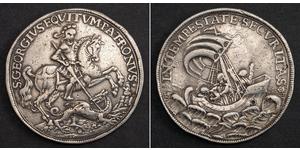(Venduta per $38.0)
Indo-Scythians, Asprachajas of Bajaur, Aspavarma (10-25 AD) BI Tetradrachm Coin.
Mint Period: 10-25 AD References: MACW # 2493 var. Denomination: Billon Tetradrachm Condition: Minor deposits, otherwise a nice VF-XF! Material: Billon (bronze alloy) Weight: 10.13gm Diameter: 21mm
Obverse: King mounted on horse, holding a whip. Greek legend with titles of Azes (II) around. Legend: BASILEOS BA (SILEON) MEGALOU AZOU
Reverse:: Pallas Athena, holding spear and raising right arm; Nandipada, solar symbol and Kharoshthi letter to left. Greek monogram to right. Kharoshthi legend around. Legend: "Imdravarmaputrasa Aspavarmasa Strategasa Jayatasa"
Indo-Scythians (also called Indo-Sakas) were a group of nomadic Iranian peoples of Saka and Scythian origin who migrated southward into western and northern South Asia (Sogdiana, Bactria, Arachosia, Gandhara, Sindh, Kashmir, Punjab, Haryana, Uttar Pradesh, Bihar, Rajasthan, Gujarat and Maharashtra) from the middle of the 2nd century BC to the 4th century AD.
The Apracharajas (also known as Apracarajas, Apraca, Avacas) were an Indo-Scythian ruling dynasty of north-western India in modern day Pakistan. The Apracharaja capital, known as Apracapura (also Avacapura), was located in the Bajaur district of the Khyber-Pakhtunkhwa, Pakistan. Apraca rule of Bajaur existed from the 1st century BCE to the 1st century CE. Its rulers formed the dynasty which is referred to as the Apracharajas.
Aspavarma (or Aspa) was an Indo-Scythian ruler of the clan of the Apraca, who ruled from around 15 to 45 CE. He ruled in the Bajaur area of modern Pakistan, and is considered one of the Apraca rulers. He is essentially known through his coins and a few inscription.
Asparvama was a son of Apraca king Indravarman, as known from an inscription discovered in Taxila, who himself is known to be the son of Vispavarma according to Indravarman's Silver Reliquary.
Indravarman's Silver Reliquary, which is known for sure to be before the Bajaur casket, hence before 5-6 CE, and is therefore usually dated to the end of the 1st century BCE, describes Aspavarma's grandfather Vispavarma as a general, and not yet a king at that time. This tends to confirm that his grandson, Aspavarma, probably ruled quite some time later, in the middle of the 1st century CE.
Aspavarman is also referenced in Gāndhārī texts, written in Kharoṣṭhī script, dating from the period.
The coinage shows the king on a horse, holding a whip in his right hand, in a style consistent with that of Azes II (who possibly is identical with Azes I). On the reverse, Athena makes a benediction gesture, and is flanked by a Buddhist triratna symbol.
According to Joe Cribb, from a coinage standpoint, Aspavarma was contemporary to Sasan and Mujatria, just before the rule of Kushan ruler Vima Takto.

1 Stiver Regno Unito di Gran Bretagna e ...
il gruppo ha 13 monete / 13 prezzi
Add coin to this group
5 Cent Hong Kong Argento Edoardo VII (1841-1910)
il gruppo ha 10 monete / 9 prezzi
⇑
1 Thaler Regno d'Ungheria (1000-1918) Argento
il gruppo ha 8 monete / 8 prezzi
⇑

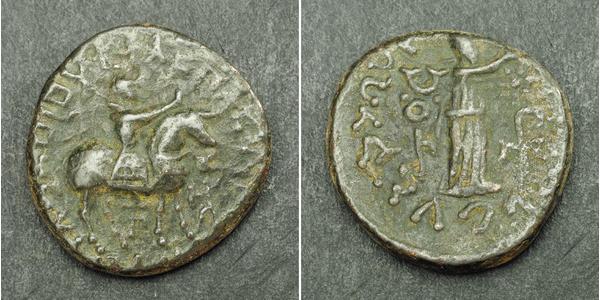









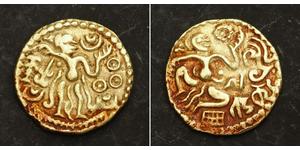



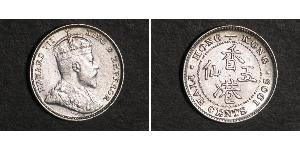
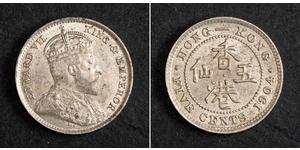
-300-150-8icKb0OMzXsAAAFC0pN7J4iq.jpg)
